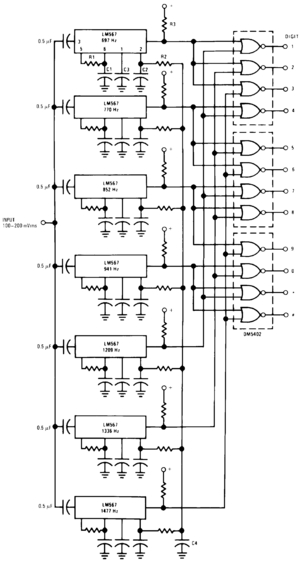ktwestsun
Newbie level 4
i am wondering if i could make cirkit which will light LED When they detect specific sound frequency.
i would like to put 5 LEDS. And it connected with input sound cable which play specific frequency.
the sound cable will give 5 kind of hertz(100,150,200,250,300)and it will make sound one kind of hertz at one time.
the LED shoud be lighting by DC suply( i think i could use electrolytic condenser)
I dont know what kinda electric part i can use for detecting specific herts.
could you give me some ideas?
i would like to put 5 LEDS. And it connected with input sound cable which play specific frequency.
the sound cable will give 5 kind of hertz(100,150,200,250,300)and it will make sound one kind of hertz at one time.
the LED shoud be lighting by DC suply( i think i could use electrolytic condenser)
I dont know what kinda electric part i can use for detecting specific herts.
could you give me some ideas?
